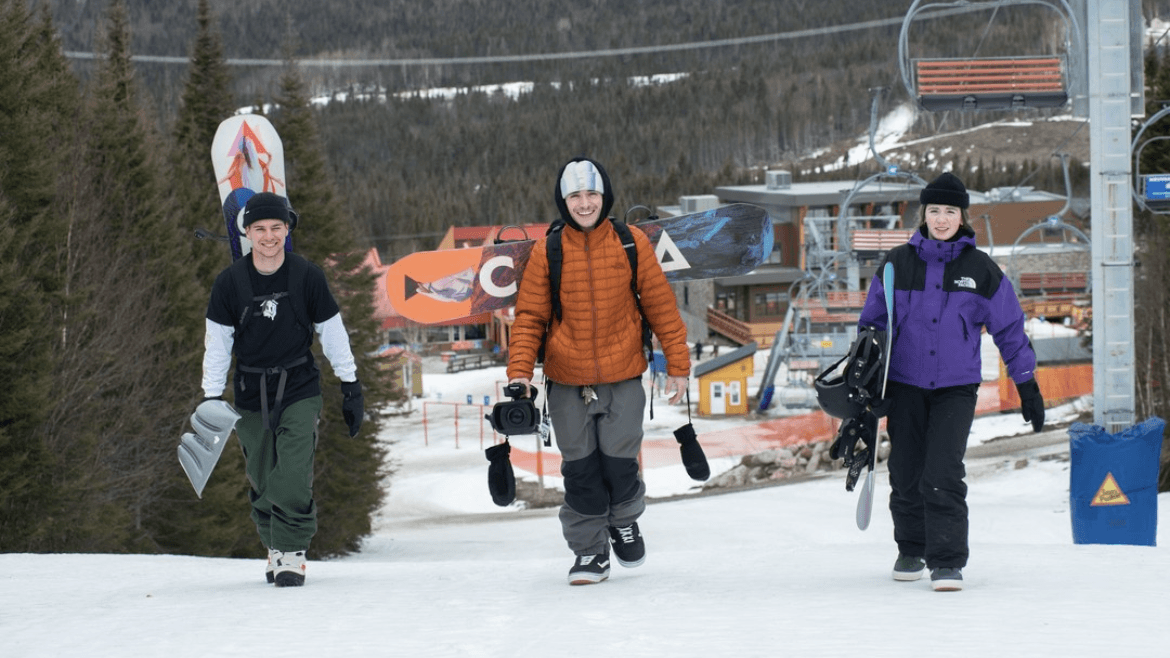When you practice a winter sport like snowboarding, you have to know how to dress properly in order to protect yourself from the elements like snow or wind. In addition, it is also necessary to be able to manage the perspiration due to the physical effort of the practice of our sport.
The three-layer system is the best way to stay dry and warm:
A layer to manage perspiration and wick it away, an insulation layer to provide warmth and, finally, an outer layer to protect against the elements.
 1st breathable layer to manage perspiration
1st breathable layer to manage perspiration
When we practice our sport, the body temperature increases and perspiration appears. If your sweater becomes wet due to this perspiration, a feeling of cold appears as soon as you stop your physical effort, because the water remains in contact with your skin. The first step is therefore to avoid wearing a sweater that absorbs perspiration.
For example, you must avoid wearing a cotton sweater at all costs, because this fabric is very absorbent and takes a long time to dry.
Your choice of sweater should therefore be directed towards synthetic fabrics, such as polyester or polyamide. These fabrics do not absorb water. Thus, during perspiration, the moisture is expelled outside the garment and is then no longer in contact with the skin. Wearing a technical fabric made of synthetic material helps to eliminate water and humidity, and you will no longer have that feeling of cold when you stop working.
Another interesting choice for the first layer: merino wool. This wool, even when wet, retains heat and limits odours. It is a wool that can absorb a lot of water and thus remove the sweat from your skin, again with the aim of not creating the cold. You don't even have to wash the merino wool every time you use it, so perfect if you want to ride a whole weekend without having to worry about washing!
Besides, if you want an interesting first layer and have more style, think of the famous AirBlaster Ninja Suits!
 2e insulating layer for extra warmth
2e insulating layer for extra warmth
The second layer is to protect you from the cold and retain the heat produced by the body.
The quality of the insulation of the garment is seen by its ability to trap air in its fibers. There are several types of insulation, and you can therefore adapt your second layer according to the temperature:
Hot outside temperature or sustained activity:
In this case, the second layer can be set aside. However, you can carry insulation in your bag to withstand the cold when stopping the effort, such as climbing a splitboard, for example.
Cold temperature:
In colder conditions, the fleece jacket is ideal for providing the necessary warmth. Otherwise, puffer-style coats made of synthetic material are an interesting choice, as they are warm, packable and easily washable. We often prioritize synthetic insulation because it manages moisture better. Natural down, even if it is warmer, tends to absorb water and thus loses its insulating power.
 3e waterproof and windproof layer
3e waterproof and windproof layer
The third layer is the famous shell. It's the layer you put on above everything else to protect you from snow, wind or water. Most of the time, all the seams of this type of layer are waterproof and taped. This avoids leaving a path for water to penetrate the jacket.
Some coats also have ventilation, in the form of a zip, to help evacuate perspiration.
When we think of the third layer, we quickly think of Gore-Tex which offers very good impermeability. However, this last layer can be chosen according to your own needs, and many different choices exist.
Finally, some snowboard jackets sometimes combine insulation and protection from the elements (2e and 3e layer). So if you think you don't need to deal with all the different layers because you're more of a mountain-riding type, these jackets are for you!

